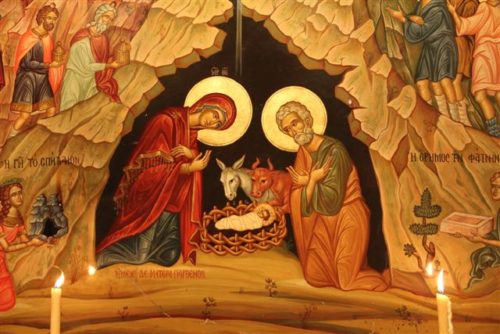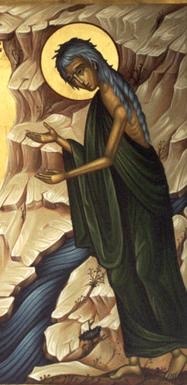
Before I answer the question below, I want to point out the great loss of our heritage. The above icon is from the Exo-narthex of the Great Church of Chora in Constantinople now turned into a mosque by the Turkish government. May Our Lord, the Saviour, protect His Church in Chora and keep it safe.
When Mary and Joseph traveled from Nazareth to Bethlehem to pay their taxes, how long would the trip have taken?
A. The distance “as the crow flies” from Nazareth to Bethlehem is about 70 miles. Under normal circumstances, without too many winding roads or rough spots to traverse, people might well have been able to travel (on foot or by donkey) about 20 miles a day, for a total one-way trip of perhaps four days. However, we must keep in mind several factors that might have made this particular journey last longer.
First, the land of Samaria lay along the most direct route between Nazareth and Bethlehem, and in Jesus’ day, there was considerable hostility between Jews and Samaritans. Even if, as I think we can assume, Our Lady and St. Joseph bore no animosity toward Samaritans, it would have been difficult and even dangerous for them to travel through that country. They might have been harassed and would almost certainly have been refused lodging, just as Jesus and His disciples were treated some years later (see Luke 9:51-56).
Surely St. Joseph would have sought to protect his wife, and the Child she carried, from such a threat. So, as was common among the Jews of the day, the holy couple would probably have journeyed far off the “direct” route to avoid Samaria, taking a detour from Galilee across the Jordan River and then back again into Judea farther south. That would have added many miles, and several days, to the journey.
Second, remember that Mary was close to the end of her pregnancy. No doubt they had to travel much more slowly than normal to avoid excessive discomfort for her and risks to the health of both mother and Child.
Given these factors, the one-way trip may have taken a week or ten days, and perhaps much longer.
Second, remember that Mary was close to the end of her pregnancy. No doubt they had to travel much more slowly than normal to avoid excessive discomfort for her and risks to the health of both mother and Child.
Given these factors, my guess is that the one-way trip took at least a week or ten days, and perhaps much longer.








